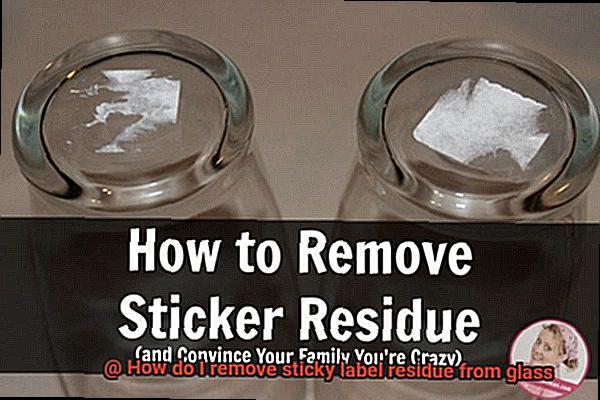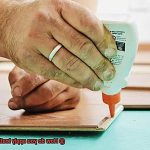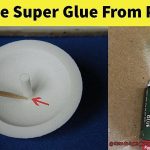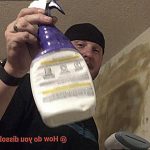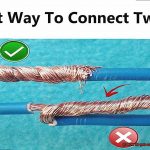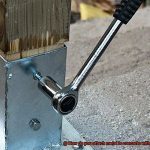Hey there, glass owners. Ever bought something cool, only to end up with a sticky mess after peeling off the label? We’ve all been there, scrubbing away at those stubborn remnants that just won’t let go. But fear not. This guide has got your back. We’re about to spill all the secrets on how to effortlessly remove sticky label residue from glass.
In this age of online shopping and DIY projects, sticky labels are becoming a real pain. Whether it’s a fancy candle jar, a sleek glass bottle, or a fresh windowpane, knowing how to get rid of that sticky stuff can save you time, money, and loads of frustration. Say goodbye to scraping or using harmful chemicals that could do more harm than good.
Throughout this blog post, we’re going to explore tried-and-tested methods that will kick stubborn sticker residue right out the door. From everyday household items to secret industry hacks, we’ll walk you through each technique step-by-step. Plus, we’ll talk about picking the right method for your specific type of glass and adhesive so you don’t accidentally ruin anything.
So if you’re ready to bring back the crystal-clear shine of your glass surfaces and say adios to pesky sticky label residue, keep reading. Get ready for some mind-blowing tips and tricks that’ll leave your glass looking brand spanking new. Let’s dive in.
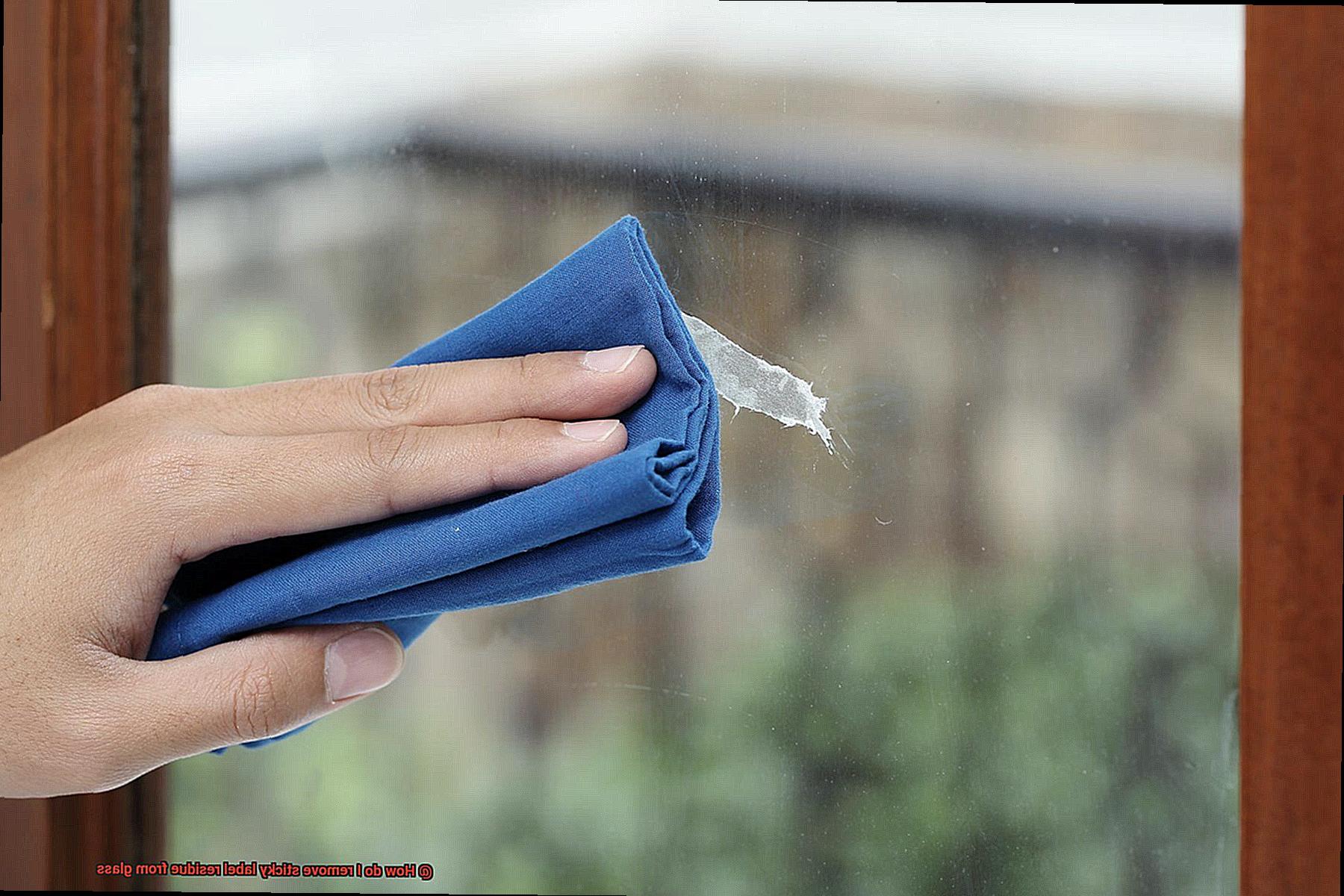
What is Sticky Label Residue?
Contents
- 1 What is Sticky Label Residue?
- 2 Common Household Items to Remove Sticky Label Residue from Glass
- 3 How to Use Vinegar to Remove Sticky Label Residue from Glass
- 4 How to Use Baking Soda to Remove Sticky Label Residue from Glass
- 5 How to Use Rubbing Alcohol to Remove Sticky Label Residue from Glass
- 6 Commercial Products for Removing Sticky Label Residue from Glass
- 7 Tips for Removing Sticky Label Residue from Glass
- 8 Conclusion
Sticky label residue, the bane of glass surfaces, can be a stubborn and unsightly mess. However, fear not. By employing the right techniques and utilizing household products, you can effortlessly banish this adhesive nightmare and restore your glass surfaces to their original glory. In this comprehensive guide, we will delve into the world of effective methods for removing sticky label residue from glass.
The Dual Power of Vinegar:
Harnessing the acidic properties of vinegar, an omnipresent cleaning agent in most households, can prove invaluable when combating sticky label residue. Follow these simple steps to utilize vinegar’s adhesive-breaking prowess:
- Immerse a cloth or sponge in vinegar
- Apply the vinegar-soaked cloth or sponge to the affected area and allow it to sit for a few minutes
- Gradually scrub the residue with the cloth or sponge
- Rinse the glass with water to eliminate any lingering vinegar scent
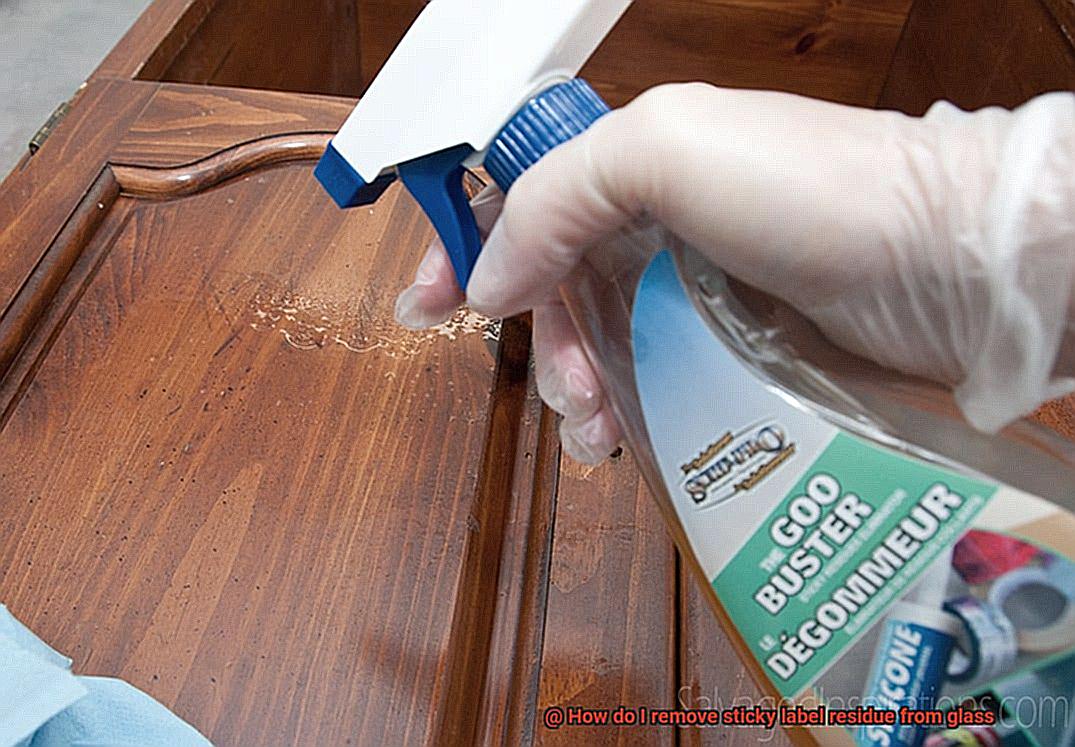
Baking Soda: A Formidable Ally:
Another household staple, baking soda, possesses remarkable adhesive removal capabilities. Employ baking soda as follows:
- Create a thick paste by blending baking soda with water
- Smear the paste onto the residue and let it rest for a few minutes
- Gently scrub the area in circular motions using a soft cloth or sponge
- Rinse the glass to eradicate any residual paste
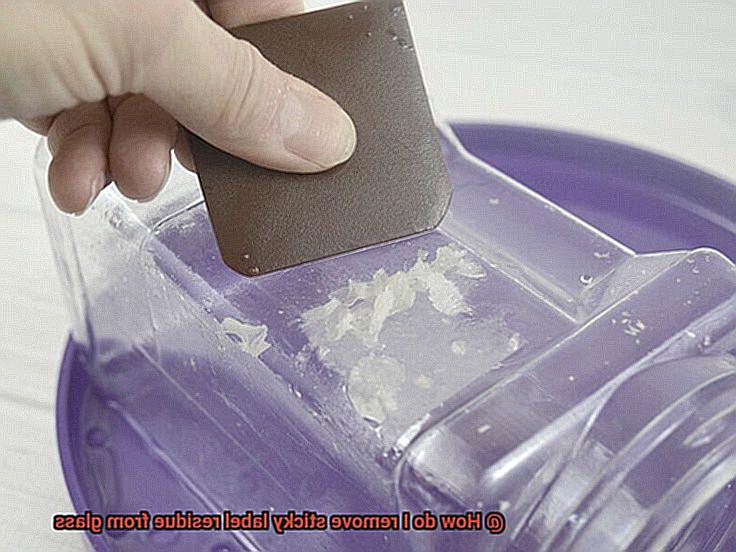
Rubbing Alcohol: Dissolving the Bonds:
Rubbing alcohol, a potent solvent capable of dissolving various adhesives, is a formidable tool in your quest to eliminate sticky label residue from glass. Follow these steps when utilizing rubbing alcohol:
- Dampen a cloth or cotton ball with rubbing alcohol
- Apply it to the sticky area and allow it to sit for a few minutes
- Tenderly rub the residue until it loosens and easily comes off
- Eradicate any remaining residue with a clean cloth
Commercial Products: Specialized Solutions:
For those seeking a more specialized approach, an array of commercial products designed explicitly for removing sticky label residue from glass are available. These products are typically available in spray or liquid form and can be found in most stores. For optimal results, carefully follow the instructions provided on the product packaging.
Common Household Items to Remove Sticky Label Residue from Glass
Goo Gone: The Adhesive Assassin
Enter Goo Gone, the name synonymous with adhesive removal. This petroleum-based solvent is the ultimate warrior against sticky label residue. Take a small amount, apply it onto a cloth or sponge, and delicately rub it onto the residue. Give it a few minutes to work its magic, then wipe it away with a clean cloth. Rinse the glass with warm water, and voila. The residue is banished.
Rubbing Alcohol: The Solvent Savior
Don’t underestimate the power of rubbing alcohol in your quest for a residue-free glass surface. Acting as a solvent, it dissolves the adhesive, making removal a breeze. Soak a cotton ball or cloth in rubbing alcohol and gently rub it onto the sticky residue. After letting it sit for a few minutes, use a clean cloth to wipe away the residue. Rinse the glass with warm water, and rejoice in your triumph over stickiness.
Vinegar: The Acidic Avenger
Prepare to be amazed by the versatility of vinegar – not just for cooking but also for conquering sticky label residue on glass surfaces. Its acidic nature breaks down the adhesive, rendering it easily removable. Mix equal parts vinegar and water in a spray bottle, then generously spray the solution onto the residue. Allow it to work its magic for a few minutes, then armed with a cloth or sponge, scrub away the stubborn residue. Finish by rinsing the glass with warm water, and witness the power of vinegar in action.
How to Use Vinegar to Remove Sticky Label Residue from Glass
Don’t fret, because we have the ultimate solution for you
vinegar. In this article, we’ll delve into the incredible properties of vinegar and show you how it can effortlessly remove stubborn sticky residue from glass. Get ready to say goodbye to those pesky labels and hello to crystal-clear glass.
The Mighty Vinegar:
Vinegar is not just a staple in your pantry, but also a superhero in the cleaning world. Its acidic nature makes it a formidable opponent against sticky label residue. The acidity breaks down the adhesive components, making it easier to remove and leaving your glass spotless.
Gather Your Arsenal:
Before embarking on your sticky label removal mission, ensure that you have all the necessary tools at hand. Arm yourself with white vinegar, a trusty cloth or sponge, and a container or bowl to hold the vinegar solution.
Dilute, Soak, and Conquer:
Prepare your vinegar solution by combining equal parts of vinegar and water in your container. This dilution ensures that your glass remains unharmed while effectively tackling the residue. Soak your cloth or sponge in the vinegar solution, making sure it’s saturated but not dripping.
Apply and Let It Work Its Magic:
With your vinegar-soaked weapon in hand, gently apply the solution to the sticky residue on the glass surface. Allow it to sit for a few minutes, allowing the vinegar to penetrate deep into the adhesive and loosen its grip.
Scrub Away the Residue:
It’s time to unleash your scrubbing prowess. Using circular motions, gently rub the affected area with the cloth or sponge. You’ll witness the adhesive surrendering its hold as it starts to loosen and come off.
Rinse and Dry for Brilliance:
Once you’ve triumphed over the sticky residue, it’s time to rinse away any remaining vinegar and residue from the glass. Use clean water to thoroughly rinse the surface. To avoid unsightly water spots or streaks, diligently dry the glass with a clean cloth or towel.
How to Use Baking Soda to Remove Sticky Label Residue from Glass
You’ve just purchased a beautiful glass jar, but the joy of your new find quickly fades when you realize it’s covered in stubborn sticky residue from the label. Fear not, for we have a secret weapon that will save the day. In this article, we will delve into the wonders of baking soda and how it can effortlessly remove sticky label residue from glass surfaces. Get ready to bid farewell to those frustrating remnants and say hello to gleaming, residue-free glass.
The Powerhouse of Baking Soda:
Baking soda is a true household hero, capable of more than just helping dough rise. This unassuming white powder boasts gentle abrasive properties that can work wonders in dissolving and loosening adhesive residues on glass surfaces. What’s more, it’s safe, effective, and can be found in most kitchens.
To begin your quest against sticky residue, gather some warm water, a clean cloth or sponge, and, of course, baking soda. Create a thick paste by mixing the baking soda with water: not too runny, not too dry.
Suit Up for Battle:
Armed with your trusty baking soda paste, it’s time to face the sticky residue head-on. Wet the cloth or sponge with warm water and sprinkle the paste onto it. Ensure the cloth or sponge is damp but not excessively wet.
Scrub Away like a Superhero:
With determination in your eyes, gently scrub the sticky label residue on the glass using the cloth or sponge with baking soda. Apply just enough pressure to get the job done without causing scratches on the glass surface. Baking soda springs into action as an abrasive superhero, effortlessly loosening and lifting off the stubborn residue. Its mild alkaline properties further aid in breaking down the adhesive.
Persistence Prevails:
Continue scrubbing until every last trace of sticky residue has vanished. For those tenacious spots, don’t lose hope. Apply more baking soda paste as needed. Remember, patience is key. Stubborn or aged adhesive residues may require a little extra effort, but with baking soda on your side, victory is within reach.
Rinse and Revel in Success:
With the sticky residue banished, it’s time to celebrate your triumph. Rinse the glass with clean water to remove any remnants of baking soda. Dry the glass thoroughly with a clean towel or allow it to air dry. Take a moment to bask in the glory of your beautifully clean glass.
How to Use Rubbing Alcohol to Remove Sticky Label Residue from Glass
We have a powerful solution for you: rubbing alcohol. In this article, we will delve into the world of rubbing alcohol and unveil its magical abilities to restore your glass to its sparkling glory.
With its affordability and accessibility, it has become a popular choice for many people in their quest to eliminate stubborn adhesives. So let’s dive right in and learn how to unleash the true potential of rubbing alcohol in removing sticky label residue from glass.
Gather Your Supplies
The first step in this battle against sticky residue is to ensure you have all the necessary supplies. You will need rubbing alcohol (specifically isopropyl alcohol), a cloth or paper towel, and a scraper or razor blade (if required). Having these supplies at hand will equip you for any sticky situations that may arise.
Apply the Rubbing Alcohol
Now it’s time to put that rubbing alcohol to work. Take a cloth or cotton ball and moisten it with rubbing alcohol, ensuring it is not overly saturated. Gently dab the alcohol onto the sticky label residue, making sure to cover the entire affected area. Witness the power of rubbing alcohol as it begins to break down the adhesive, preparing it for removal.
Let it Sit
Patience is a virtue in this process. Allow the rubbing alcohol some time to work its magic by leaving it on the residue for a few minutes. During this period, the alcohol will penetrate deeper into the adhesive, further loosening its grip.
Gently Rub Away the Residue
Armed with your cloth or paper towel, commence the gentle assault on the residue. Employ circular motions while applying slight pressure to lift off the adhesive remnants. As you continue to rub, you’ll marvel at how the residue starts to disintegrate and surrender.
Extra Stubborn Residue? Use a Scraper
If the sticky residue proves to be particularly stubborn, don’t despair. You can bring out the big guns – a scraper or razor blade. However, exercise extreme caution to avoid scratching the delicate glass surface. Employ controlled movements and a gentle touch to scrape off the remaining tenacious residue.
Clean and Dry
After successfully eradicating all traces of sticky label residue, it’s time to give your glass a well-deserved clean. Wash the glass with warm soapy water or utilize a specialized glass cleaner to eliminate any lingering residue or alcohol. Rinse thoroughly and meticulously dry the glass with a clean towel to ensure a pristine finish without streaks or water spots.
Commercial Products for Removing Sticky Label Residue from Glass
Look no further, as the market is brimming with commercial products specifically designed to tackle this annoying problem. In this article, we will explore a variety of fascinating options that will effortlessly remove sticky label residue from glass, allowing you to bid farewell to those unsightly marks once and for all.
One of the most popular and highly effective products is Goo Gone. This liquid solution has earned a stellar reputation for its ability to eliminate sticky residues with ease. Simply apply Goo Gone directly onto the residue, granting it a few minutes to work its magic, and then effortlessly wipe it away with a clean cloth or paper towel. It’s a quick, hassle-free process that guarantees impressive results.
Surprisingly, another household name that proves to be an unexpected hero in this quest is none other than WD-40. Renowned primarily as a lubricant, WD-40 also boasts remarkable adhesive removal properties. Just spritz a small amount onto the sticky residue, allow it to sit for a few minutes, and then effortlessly wipe it away. The versatility of this multipurpose product never ceases to amaze.
For those seeking a more natural solution, look no further than rubbing alcohol. This tried-and-true option works wonders in eliminating sticky label residue from glass. Simply saturate a cloth or cotton ball with rubbing alcohol and gently rub it onto the residue until it begins to dissolve. Once loosened, wipe away the remaining residue with a clean cloth. It’s a simple yet highly effective method that countless individuals swear by.
If you prefer a cost-effective alternative, vinegar is your answer. This natural wonder can work miracles in removing sticky residues from glass surfaces. Create a mixture of equal parts vinegar and water in a spray bottle and generously apply it onto the residue. After allowing it to penetrate for a few minutes, swiftly wipe away the residue with a clean cloth or paper towel. Not only is vinegar an effective option, but it also serves as a natural alternative to some of the chemical-based products available.
For those seeking a product specifically formulated for adhesive removal, consider investing in commercial adhesive removers such as Un-Du or De-Solv-it. These remarkable products are specially designed to dissolve adhesive, simplifying the process of wiping it away. Packaged in convenient spray bottles, application could not be easier.
Tips for Removing Sticky Label Residue from Glass
Fear not. In this comprehensive guide, we will share expert tips and techniques for effortlessly removing sticky label residue from glass. With these tried-and-true methods, your glass surfaces will be restored to their sparkling best in no time.
Vinegar – The Versatile Cleaning Agent:
Let’s start with a kitchen staple that doubles as a powerful cleaning agent – vinegar. Begin by soaking a cloth or sponge in vinegar and generously apply it to the sticky residue. Allow the vinegar to work its magic for a few minutes, then gently scrub the area using circular motions. Finally, rinse the glass with water to eliminate any lingering vinegar scent. Vinegar is a natural and safe option that can be used on most types of glass surfaces.
Baking Soda – The Gentle Abrasive:
When vinegar alone doesn’t do the trick, it’s time to bring in baking soda, our gentle abrasive ally. Create a thick paste by mixing baking soda with water and apply it to the sticky residue. Let it sit for a few minutes to penetrate the adhesive, then use a soft cloth or sponge to gently scrub the area. The baking soda acts as a mild abrasive, loosening and lifting the sticky residue. Rinse the glass thoroughly with water to remove any residual residue.
Rubbing Alcohol – The Solvent Superstar:
For those stubborn sticky residues that refuse to budge, rubbing alcohol comes to the rescue. Dampen a cloth or cotton ball with rubbing alcohol and carefully dab it onto the affected area. Allow the alcohol to sit for a few minutes, giving it time to dissolve the adhesive. Then, with gentle pressure, rub the residue until it starts to loosen and come off. Use a clean cloth to wipe away any remaining residue. Rubbing alcohol is a potent solvent that effectively dissolves various types of adhesives, making it an ideal choice for glass surfaces.
Commercial Products – A Helping Hand:
If you prefer a ready-made solution, there are commercial products specifically formulated to tackle sticky label residue on glass. These products are available in spray or liquid form and can be easily found in most stores. Follow the instructions provided on the product packaging for optimal results. Commercial products are designed to tackle tough adhesive residue efficiently, offering a convenient option for quick and effective removal.
Be Gentle and Test First:
Regardless of the method you choose, it is crucial to handle glass surfaces with care when removing sticky label residue. Avoid using sharp tools or abrasive materials that may scratch or damage the glass. Always perform a patch test on a small, inconspicuous area of the glass before applying the chosen method to the entire surface. This precaution ensures that the method is suitable for your specific type of glass and won’t cause any unintended harm.
Conclusion
Removing sticky label residue from glass can be a frustrating task, but fear not, for there are effective methods that can come to your rescue.
One technique involves using common household items like vinegar or rubbing alcohol. Simply soak a cloth in either of these solutions and gently rub the sticky residue until it starts to dissolve.
Another option is to try using an adhesive remover specifically designed for glass surfaces. These products are readily available at most hardware stores and can work wonders in removing stubborn residue.
With a little patience and the right tools, you’ll have your glass looking clean and pristine in no time.

